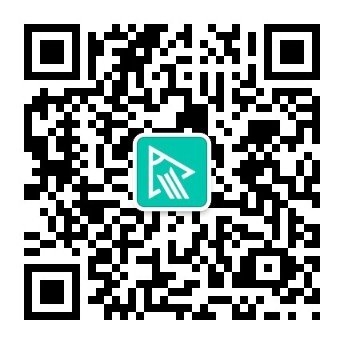0.1元|解题技巧课NEW
高中0元加油站NEW
2022高考全程班NEW
新东方高中1对1NEW
清北学长支招中高考NEW
新高一课业提升班NEW
高二能力提升班NEW
高三高考提升班
分数线
近5年分数线
高考资料+真题解析
9千+套
B
My motivation for starting our family tradition of reading in the car was purely selfish: I could not bear listening to A Sesame Street Christmas for another 10 hours. My three children had been addicted to this cassette on our previous summer's road trip.
As I began to prepare for our next 500-mile car trip,I came across a book Jim Trelease's The Read Aloud Handbook. This could be the answer to my problem, I thought. So I put Roald Dahl’s James and the Giant Peach into my bag. When I began to read aloud the tale of the boy who escapes the bad guys by hiding inside a giant peach, my three kids argued and wrestled in their seats. But after several lines,they were attracted into the rhythm of the words and began to listen.
We soon learned that the simple pleasure of listening to a well-written book makes the long miles pass more quickly. Sometimes the books we read became highlights of the trip. I read Wilson Rawls's Summer of the Monkeys as we spent two days driving to the beach. We arrived just behind the power crews restoring(恢复)electricity after a tropical storm. The rain continued most of the week,and the beach was covered with oil washed up by the storm. When we returned home,I asked my son what he liked about the trip. He answered without hesitation,“The book you read in the car. ”
Road trips still offer challenges,even though my children now are teenagers. But we continue to read as we roll across the country. And I'm beginning to see that reading aloud has done more than help pass the time. For at least a little while, we are not shut in our own electronic worlds. And maybe we've started something that will pass on to the next generation.
24. Why did the author start reading in the car?
A. She wanted to have a better journey.
B. She wanted to keep a family tradition.
C. Her children were addicted to reading.
D. Her children were tired of the cassette.
25. How did the children react after the author read a few lines?
A. They kept fighting.
B. I hey hid themselves.
C. They soon settled clown.
D. 丁hey read together aloud.
26. What can we learn about the author and her family’s trip to the beach?
A.They were caught in a storm.
B. They enjoyed reading on the road.
C. They had a good time on the beach.
D. They thought it had passed too quickly.
27. Which can be the best title for the text?
A. Better Traveling than Reading
B. Books that Changed My Children
C. Road Trips Full of Challenges
D. Reading Makes Great Road Trips
C
The arm bones of women who lived 7-000 years ago show a surprising level of strength-even higher than today's professional athletes. That's according to a first-ever study comparing prehistoric(史前的)bones to those of living people. The finding suggests a revision of history — the everyday lives of prehistoric women were filled with hard labor, rather than just sitting at home doing lighter tasks while the men struggled and fought for life.
Before the study, there are no clear records describing how our ancient ancestors lived. It can be easy to forget that bone is a living tissue, one that responds to the difficulties we put our bodies through,"said lead author Alison Macintosh. “Physical force and muscle activity both put pressure on the bone. The bone reacts by changing in shape, thickness and other aspects over time. ”
Previous studies only compared female bones to contemporary male bones, the researchers said — and that's a problem, because the response of male bones to stress and change is much bigger than that of women. For instance,as humans moved from a hunter-gatherer lifestyle constantly on the move to a more settled agrarian (农耕的)one, changes can be observed in the structure of the shinbone (胫骨) 一 and these changes were much more evident in men.
However, a comparison of the bones of prehistoric women to the bonos of living female athletes can help us work out a more accurate picture of what those prehistoric women were doing. “By analyzing the bones of living people and comparing them to the ancient hones, we can start to explain the kinds of labor our ancestors were performing,"Macintosh said. What they found was that women's leg strength hasn’t changed a great deal, but their arms used to be very powerful. Prehistoric women, the researchers found, had arm strength 11〜16 percent stronger than those of modern rowers, and 30 percent stronger than those of non-athletes.
28. What does the study tell about prehistoric women?
A. They were stronger than men.
B. They had lighter bones than men.
C. They did tough tasks as the men.
D. They spent most time staying at home.
29. What problem did previous studies on prehistoric bones have?
A. They lacked enough comparison.
B. They only studied men's bones.
C. They focused little on bones.
D. They ignored the lifestyles.
30. What does the underlined word “that” in Paragraph 3 refer to?
A. Bones’ structure.
B. Bones' thickness.
C. Bones’ response to stress.
D. Bones’ stress from hard labor.
31. What can we learn from the last paragraph?
A.It’s still hard to explain our ancestors' lifestyle.
B. Prehistoric women went through much suffering.
C. Women's arms have becomc much stronger over time.
D. Prehistoric women are stronger than contemporary females.
高中一轮复习资料大放送


手机扫码关注免费领取
5年高考真题及复习资料

 推荐阅读
推荐阅读
为方便考生们复习,新东方在线高考频道整理了2021届福建泉州普通高中毕业班质检一语文试卷,供考生参考。 点击查看:2021届高三模
为方便考生们复习,新东方在线高考频道整理了2021届石家庄市高中毕业班教学质量检测一试题及答案汇总,供考生参考。 点击查看:20
为方便考生们复习,新东方在线高考频道整理了2021届石家庄市高中毕业班教学质量检测一语文试题及答案,供考生参考。 点击查看:20
为方便考生们复习,新东方在线高考频道整理了2021届石家庄市高中毕业班教学质量检测一英语试题答案,供考生参考。 点击查看:2021
为方便考生们复习,新东方在线高考频道整理了2021届石家庄市高中毕业班教学质量检测一物理试题及答案,供考生参考。 点击查看:20
为方便考生们复习,新东方在线高考频道整理了2021届石家庄市高中毕业班教学质量检测一数学试题及答案,供考生参考。 点击查看:20
为方便考生们复习,新东方在线高考频道整理了2021届石家庄市高中毕业班教学质量检测一历史试题及答案,供考生参考。 点击查看:20
为方便考生们复习,新东方在线高考频道整理了2021届江苏扬州中学高三开学测试题及答案汇总,供考生参考。 点击查看:2021届高三模
为方便考生们复习,新东方在线高考频道整理了2021届江苏扬州中学高三开学测地理试题及答案,供考生参考。 点击查看:2021届高三模
为方便考生们复习,新东方在线高考频道整理了2021届江苏扬州中学高三开学测政治试题及答案,供考生参考。 点击查看:2021届高三模
